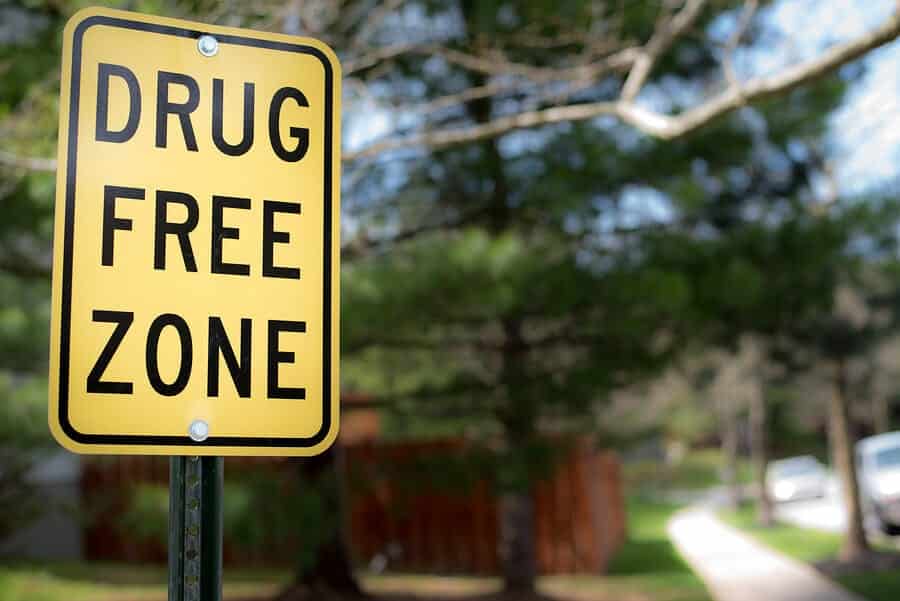
Halfway House vs. Sober Living House – Many people choose to reside in a group sober living environment following inpatient treatment for addiction. While people tend to use these terms interchangeably, it is important to understand that a sober house is not the same thing as a halfway house or three-quarters house.
One of the biggest dangers that people face coming out of treatment is relapse and vulnerability to high-risk situations. Both sober living homes and halfway houses help to protect people in the early stages of recovery by offering an environment conducive to peer support and accountability.
These residences also usually provide access to counseling, support groups, and employment resources. Residents are held accountable for their sobriety and must adhere to strict rules, curfews, and sometimes require drug testing.
What Is a Halfway House?
Halfway houses are places that are sometimes designated for people who have been released from prison or who may have also undergone an alcohol or drug treatment program while incarcerated. This type of halfway house is often sponsored by state funds to help those recently released from prison reacclimate to life in the outside world. Not all halfway houses are used solely for this purpose, however.
Some are designed to include any person with a substance use disorder who needs further support during or after an addiction treatment program. This environment can be very beneficial in allowing people to move forward while surrounded by a community focused on support as each member transitions from one way of life to another. Halfway houses often require enrollment in or completion of some type of treatment program, and these houses also tend to limit a resident’s stay.
What Is a Three-Quarters House?
A three-quarter house is a transitional environment that offers less supervision than traditional halfway houses. These sober living environments are unregulated. Reputable three-quarter houses can help people transition out of intensive treatment, and living in such an environment may be a positive final step that a person can take before their re-entrance back into normal life.
In a three-quarter house, drugs and alcohol are still banned, and they generally provide fewer resources and require less accountability. Also, residents aren’t usually drug tested, and support group attendance is optional. Moreover, these homes allow residents more freedom as they become accustomed to living without constant supervision and support.
What Is a Sober Living House?

After residential treatment, it can be challenging to transition to the outside world while continuing to commit to a substance-free life. The main function of a sober living house is to help those in recovery who need extra security and support by giving them a place to go that is free from drugs and alcohol and the triggers that they will eventually have to face in the real world.
Unlike a halfway house, however, residents do not always need to be enrolled in a treatment program to reside in a sober house, and there may not be a limit set on the duration of time that one can live there. This difference can be vital for those who are contemplating their long-term options and feel that they would be helped by access to community support and personal accountability for a longer period.
Sober living houses are frequently, but not always, owned and operated by treatment centers, or they are closely affiliated with them and located nearby. Transportation is often available to go to and from outpatient treatment and other services.
Aftercare Treatment in Recovery from Addiction
While inpatient and intensive outpatient treatment are fundamental, after treatment is over, a long-term plan is still needed. According to the National Institute on Drug Abuse (NIDA), about half of all individuals treated for substance use disorders will relapse at least once. Therefore, aftercare treatment becomes just as vital to sobriety as the initial investment in addiction recovery.
A long-term aftercare plan should address the following:
- Holding the individual accountable and responsible
- Ensuring that he or she does not use addictive substances
- Minimizing relapse triggers in the environment
- Helping the person take care of responsibilities such as paying rent and performing household chores
- Placing the person within a caring community of support
- Giving the person a commitment to adhere to over time
Treatment for Drug and Alcohol Addiction
Harmony Recovery Centers offers evidence-based psychotherapy, counseling, and group support in both partial-hospitalization and outpatient formats. We also provide aftercare planning services as well as alumni activities to ensure that former patients remain supported and active long-term in their newly established sober lifestyle.
Recovery from addiction is often a lifelong endeavor, but no one should have to go through it alone. You can reclaim your life and begin to reimagine it in a way you never thought possible. We can help you break the cycle of addiction and foster the healthy, happy, and fulfilling life you deserve!
Related: Benefits of Not Drinking Alcohol
Thank you for sharing in your post the advantages of living in a sober house after drug and alcohol addiction. I agree that this type of living can help people transition out of intensive treatment, and living in such an environment may be a positive final step that a person can take before their re-entry into everyday life. My brother will be out of the rehab house this week, and we plan to move him to a sober house for a few months before letting him live outside normally.